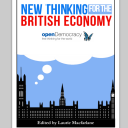Ten years since the first bank collapsed, dodgy debt still threatens another crash

Ten years ago, on 2 April 2007, the US subprime mortgage lender New Century filed for bankruptcy in a Delaware court. It was an obscure first domino to fall. But one and a half years later, Lehman Brothers was insolvent, and global finance on the brink of meltdown.
Whole bookshelves have been filled with the analysis of the crisis that followed. In essence, too much bad debt had accumulated in the system; on top of that, an impenetrable layer of derivatives had supercharged financial risks; and public regulators had been asleep at the wheel.
You would think that, armed with those lessons, we would have vanquished system instability. But in its Global Financial Stability Report last fall, the International Monetary Fund warned that medium-term risks were rising once again. Market sensitivity – essentially, anxiety among traders – breached levels we hadn’t seen since 2009.[1] Deutsche Bank’s wobbles last autumn were eerily reminiscent of the hot crisis years. Why is financial fragility still with us a decade after it burst into the open?
First, the financial weight that our economies had grown before the crisis is still there – or rather: it’s back. The immediate post-crisis shrinkage of the financial sector was like a cleansing diet after gluttony. But the needles of many economic scales are moving in the wrong direction once more.
According to the World Bank, the worldwide level of domestic credit to the private sector – households and non-financial firms – has roughly reached the level of 2006 again.[2] In the US, it has increased by 10 percentage points of GDP since the post-crisis trough in 2011.[3] Public debt burdens in many countries, especially in Europe, still hamper economic recovery.
Over-the-counter derivatives, the principal villains in many crisis accounts, are also thriving: the notional trading volume of OTC interest rate derivatives, for example, has risen enormously since 2007, from roughly $1.7 trillion a day to more than $2.6 trillion a day in 2016.[4] The repackaging and –selling of mortgages had collapsed in the wake of the crisis and never recovered. But at least in the US, the rest of this so-called securitization market has not budged much since 2007.[5]
Risk that disappeared from one corner of the financial system frequently re-emerged elsewhere in some distorted form. For example, regulators have forced derivatives dealers to set aside risk buffers for trades. That has pushed deals onto well-lit market platforms. But it has also encouraged traders to compress multiple deals into a single one, so that risks remain unchanged while the on-paper value sinks. (Much like there is more alcohol distilled into a one-liter brandy bottle than in the original wine.)
This moving-risks-around pattern holds for our economies as a whole, as well. Mortgage defaults turned outsized private debt into losses for banks, which were bailed out by taxpayers and governments, which in turn were propped up by ultra-cheap money. That has not resolved the excessive debt problem, either. Instead, it has inflated asset and stock prices in defiance of lackluster economic growth. And it has eroded real returns and put a dangerous squeeze on insurance companies, pension funds and other investors, both big and small.
The continued preponderance of finance in our economies wouldn’t be so worrying if regulators had finally found means to tame the beast. A key lesson of the crisis, after all, was that herding made individual risk assessments fallible. What made sense for isolated traders could be disastrous for system stability. Ergo, public authorities had to retake the reins. Risk assessment was too complex and consequential to leave the calculation of capital buffers to banks or default probabilities to private credit rating agencies.
Alas, regulation has proven incapable of stamping out financial volatility. From accounting standards for derivatives to risk weights for sovereign debt – that private firms failed to gauge prices and risks properly didn’t mean that public authorities would fare any better. The crisis revealed that valuation routines are never foolproof. So public authorities understandably shied away from forcing mechanistic risk models onto markets – lest they would take the blame when eventually things would inevitably go wrong.
Where does this leave us? The past decade has taught us that we should not wait for debt mountains and finance to shrink just by themselves, for risks just to disappear from the system, or for regulators to serve us a silver bullet with which it can be contained. All sorts of trickery – from special purpose vehicles to bad banks, accounting tricks and rock-bottom interest rates – can put an overburdened financial system on life support.
But to heal our financial systems for good, we need to add a powerful new instrument to our tool kit: debt forgiveness where no reasonable alternative exists – whether in Greece, on bank balance sheets, or in the private sector. There is an upper limit on the debt that can slosh around the global economy before it starts wreaking havoc on debtors, creditors, and everyone else.
Back in April 2007 New Century CEO Brad Morrice presaged that, even though his company had faltered, “the non-prime sector”– code for shoddy debt – “will remain an important part of the American economy”.[6] Unfortunately, we have yet to prove him wrong.
[1] IMF, Global Financial Stability Report, October 2016, p.6.
[2] http://data.worldbank.org/indicator/FS.AST.PRVT.GD.ZS
[3] http://data.worldbank.org/indicator/FS.AST.PRVT.GD.ZS?locations=US See also here: http://bruegel.org/2016/10/private-sector-debt-matters-and-better-data-means-better-policy/
[4] http://www.bis.org/publ/qtrpdf/r_qt1612f.htm
[5] http://www.sifma.org/WorkArea/DownloadAsset.aspx?id=8589959663
[6] http://www.reuters.com/article/us-newcentury-bankruptcy-idUSN0242080520070403






